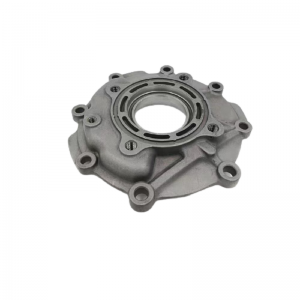People have been casting metals for thousands of years, from cast iron and bronze tools to gold and silver jewelry. In the modern era, metal casting continues to play an essential role in human industry and art. Before you can even work with “raw materials” like ingots, rods, or sheets, the metal has to be melted and cast higher up in the supply chain.
Casting is an important process for nearly all metal products at some point. That said not all metals behave the same way or produce the same results during casting. There are many different factors that affect how easy it is to cast a product from metal, and these fit under the umbrella term “castability.”
What is Castability?
In short, castability represents how easy it is to pour molten material into a mold and obtain a defect-free casting. Castability is a qualitative term, so it doesn’t have a measurable numeric value.
If casting a metal frequently results in rejected parts or is expensive and time-consuming to get right, it has “poor castability”. But if it can consistently and efficiently produce good results, it has “good” or even “excellent” castability.
A metal’s castability has a direct impact on the time and cost required to produce a part. It also affects the features and complexity that can be achieved and final part quality.
3 Factors That Affect Metal Castability
While there are many material properties that can potentially influence castability, most of them can be loosely grouped into three main categories.
1) Casting temperature & thermal properties
Heating metal to the point where it is fully melted is very energy intensive, especially for metals with high melting temperatures. And the casting temperature of a metal is even higher than its melting point to prevent early solidification. So, metals with lower melting temperatures are easier to melt, improving their castability rating.
Alloys, which are metals containing more than one element, melt over a range. In most cases, alloys begin melting at a lower temperature than their primary pure metal constituent. But depending on the element they are alloyed with, they may not become fully molten until they’ve reached a higher temperature than their primary base metal.
There are several other thermal properties that can influence castability too, like thermal conductivity. Metals with high thermal conductivity cool faster and more evenly. This can cause issues for some thin-walled parts, but it also helps to alleviate some of the solidification issues we’ll introduce later on.
2) Fluidity
Like castability, fluidity is a qualitative property that represents a combination of other materials properties. Fluidity refers to how easily a material can flow.
A molten metal with better fluidity tends to do a better job of filling all the cavities of a mold during casting. It can also accommodate thinner-walled and more complex castings since the molten metal travels faster through the mold. This allows it to reach all the mold cavities before the metal begins to solidify.
Fluidity is highly influenced by viscosity and surface tension. Luckily fluidity can be affected by the alloying elements in the metal. For this reason, lead is a common addition to popular casting alloys to improve castability.
3) Solidification behavior and shrinkage
Solidification and shrinkage are perhaps the most difficult properties to account for in terms of castability. They are influenced by a number of factors, and can lead to low-quality and rejected parts.
Mold Size
In terms of shrinkage, molds must be designed larger than the final part to account for how the metal contracts during cooling. For complex geometries with tight tolerances, this can be hard to predict accurately. It can take even experienced designers several attempts to perfect the mold design.
Porosity
Solidification and shrinkage can also cause porosity — voids inside the walls of castings. Porosity is sometimes visible upon inspection if the void forms against one of the part’s surfaces, but it can also form completely within the part’s wall, making it invisible to the naked eye, but potentially compromising the strength of the product.
Crack Formation
One other common problem during solidification is crack formation. Some metals are more prone to hot cracking or hot tears than others. As the casting cools, high internal stresses can cause the weakened metal to break apart. This can also be a problem for alloys that have a wide solidification range, allowing some elements to solidify before others.
Excessive shrinkage and a tendency for solidification flaws can have a strong negative impact on a metal’s castability.
Using Metal Alloys With High Castability
Alloys with higher castability aren’t just easier and cheaper to produce, they often result in a higher-quality end product. Aluminum and zinc are popular die-casting metals thanks to their high castability. But choosing alloys like A380 aluminum that are ideal for casting means fewer reject parts and more uniform mechanical properties compared to other aluminum alloys.
If you’re looking to produce metal parts and need a reliable, high quality and well priced supplier, look no further than Shenzhen Xinsheng Precision Hardware Machinery Co., Ltd.. Our services can help you choose the right alloy and mold design to make cost-effective, high-quality metal parts.
Post time: Mar-20-2023







